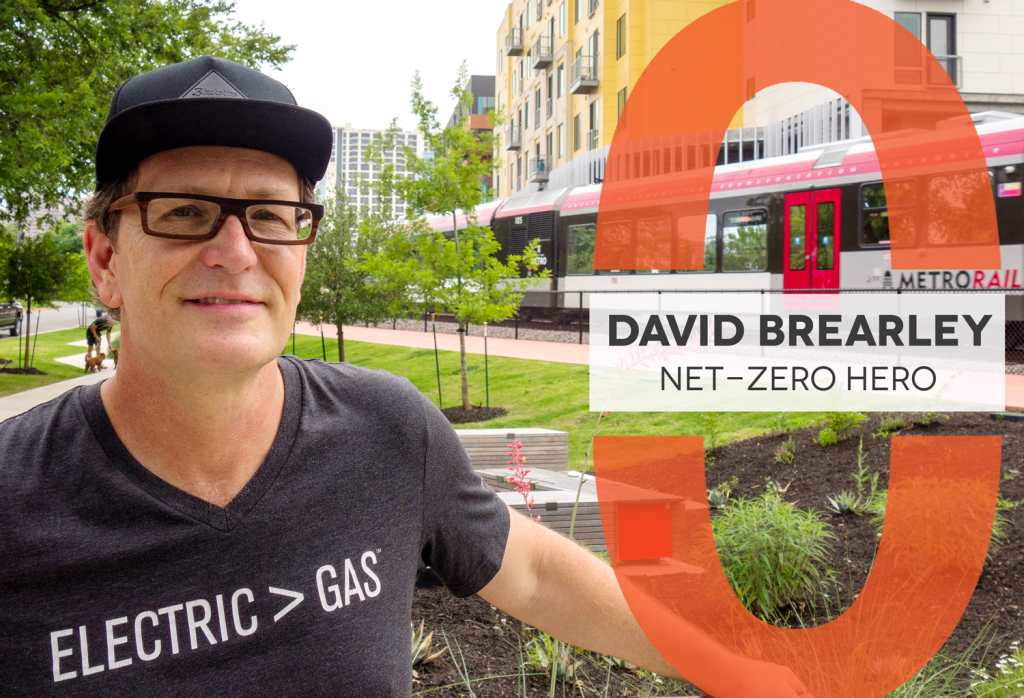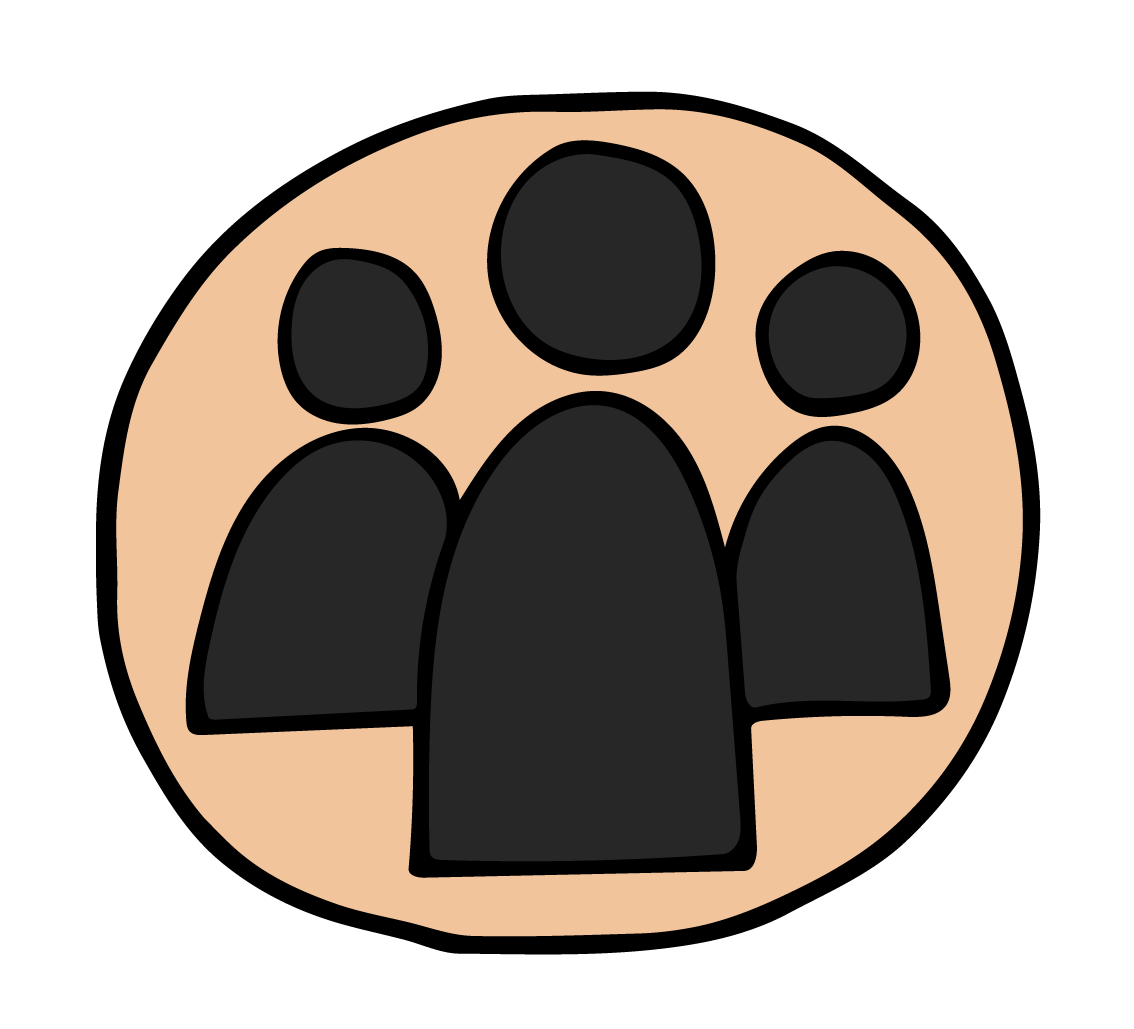
About The Author
This post was written by the City of Austin Office of Sustainability. Their mission is to protect and improve Austin's quality of life now and for future generations by leading efforts to achieve net-zero community-wide greenhouse gas emissions, a healthy & just local food system, & a climate resilient and adaptive city.

Action Box
Learn more about David's house (and other local eco-friendly homes) by attending the Cool House Tour on June 13th.
This post is sponsored by the City of Austin Office of Sustainability. All Austin Common sponsors are screened by The Austin Common team to ensure they’re doing good for their employees, customers, our community, and the planet.
Meet David Brearley, a solar energy professional and technical writer. David serves on the Board of Directors for both the Texas Solar Energy Society and Solar Austin. In early 2015, David embarked on a journey to build a green accessory dwelling unit (ADU) that could accommodate guests and also be used as a short-term rental property.
To build it, David and his wife Molly collected a variety of materials from renovation and demolition projects of homes, schools, and even the State Capitol. They also installed a solar array at the property, LED lighting, energy-efficient appliances, and more. Read on to discover what inspired David to build green, what his toughest challenges were, and how he incorporated Craigslist finds into the building’s design.
On Sunday, June 13, their property will be featured on Austin Energy Green Building’s virtual Cool House Tour!
What inspired you to build a green home?
As a university student, I was blessed with the opportunity to take an American Studies class taught by Barry Lopez, whose works—including, Arctic Dreams and Of Wolves and Men—are part of a proud tradition of American naturalists and cultural critics that stretches from Aldo Leopold and Rachel Carson to Wendell Berry and Terry Tempest Williams and beyond. I was profoundly influenced by Barry’s class. For the better part of the decade that followed, I worked by day in the building trades and immersed myself by night in environmental literature.
Fast forward to the Taos Solar Music Festival in the summer of 2002, where I met Carl Bickford who had recently founded a Renewable Energy Program specializing in solar photovoltaic system design and installation at a community college in Farmington, New Mexico. Looking at San Juan College’s mobile solar trailer, I realized on the spot that it was possible to combine my skills in construction with my passion for the environment. Later that year, one of our hands-on class projects was to add stand-alone power capabilities to Carl’s net-zero energy home in Aztec, New Mexico. Since 2003, I have worked as a solar professional in a variety of roles. As a true believer in green building and renewable energy, I am always looking for opportunities to walk the talk.
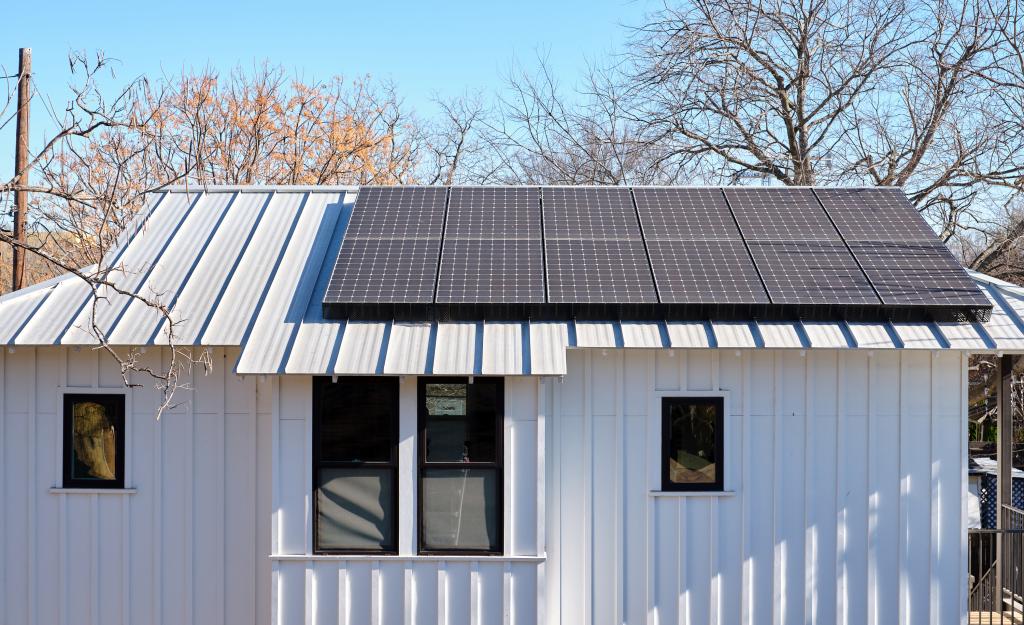
How did you do it?
To start, we designed and built a small structure. This was partly a function of the fact that we were building an accessory dwelling unit, which is a form of urban infill that increases density and reduces reliance on cars. When we started designing our project, the City of Austin limited ADUs to a maximum of 850 square feet (SF) of interior space. While our permitting was ongoing, this allowance was expanded to 1,100 SF. We stuck with our plan to build a small alley flat with a 550 SF guest suite upstairs and a modest 100 SF of conditioned space downstairs that serves as my home office. We also gained covered off-street parking and much-needed storage space. Given that our 100-year-old front house is only 1,000 SF with a single closet, this modest increase in square footage on the back of the property has a huge impact on our quality of life.
Smaller structures require fewer energy inputs. This is especially true if you focus, as we did, on design features that drive down the long-term cost of ownership. We specified oversized structural framing and used spray foam insulation to fill those deeper stud bays. We specified Energy Star-rated appliances and LED lighting. We installed a highly efficient ducted Mitsubishi mini-split system with an additional wall-mounted cassette for the downstairs office. We leveraged a Texas Gas rebate to install an ultra-high efficiency Rinnai condensing on-demand water heater. We leveraged Austin Energy rebates to install a 4.1-kilowatt roof-mounted Sun Power solar array by Freedom Solar. This small solar array generates more electricity than the back house uses, precisely because the structure is small and efficient.
Building small also allowed us to afford some luxuries that would have otherwise been outside of our budget, such as high-end finishes and custom built-ins. Perhaps most importantly, we rarely paid retail prices for these finishes. Before our construction project began, I salvaged antique longleaf pine out of two houses that were slated for demolition in our neighborhood. We used this salvaged wood for exterior soffits, exterior, and interior trim details, interior accent walls, and even some custom furniture. A friend of ours sold us some salvaged maple gym flooring that we used throughout the upstairs apartment. Other friends donated remnant Italian glass tiles from a public art installation, which tiled our shower stall (with five tiles to spare). My wife, Molly O’Halloran, spotted an oversized longleaf pine door on Craigslist, which we discovered came out of the Texas State Capital. She also found a soapstone countertop on Craigslist. I found remnant pieces of exotic hardwood languishing in the corner of a warehouse.
The interaction of these Craigslist scores and donated or salvaged materials are happy accidents that not only pushed us out of our comfort zone but also gave the project its unique character. The front porch is a good example, as the door, flooring, and wall cladding are all Craigslist scores. The longleaf pine shiplap on the ceiling is salvaged. If we had had an unlimited budget, the results would undoubtedly have been a lot less interesting. The happy accidents resulting from our budget constraints are a perpetual source of joy.
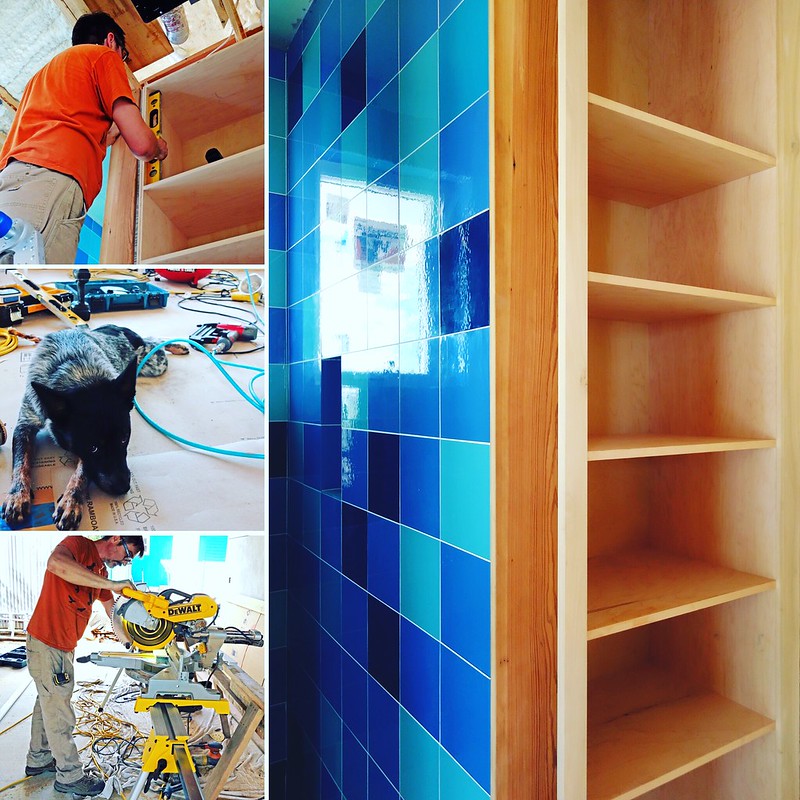
What was the toughest part of making this project a reality, and what did you learn?
Having to work two jobs for at least 18 months was definitely the toughest part of realizing our vision. My wife and I were working with a relatively modest budget. At the same time, we had high standards and expectations for quality of work and building performance. Given these constraints, we did a lot of work by owner. Molly served as the general contractor of record, design consultant, and inspector whisper. I served as the in-house project manager, chasing estimates and coordinating subcontractors and artisans. Anything that fell outside the scope of a subcontractor, Molly and I did ourselves. This included the front and back porches, exterior soffits, interior, and exterior trim, interior accent walls, pocket doors, interior painting, and the electrical finish out. We also had to solve all of the interior and exterior design problems ourselves, such as material selection, paint colors, finishes, treatments, and so forth.
As a result of this DIY work process, construction ran from December 2015 through April 2017, when we closed out the permits. In practice, my work salvaging materials and prepping the site began in early 2015; I did not finish the storage and office spaces downstairs until late 2017. It was a long couple of years. In addition to acquiring some new skills, we learned that dogged persistence pays—eventually.
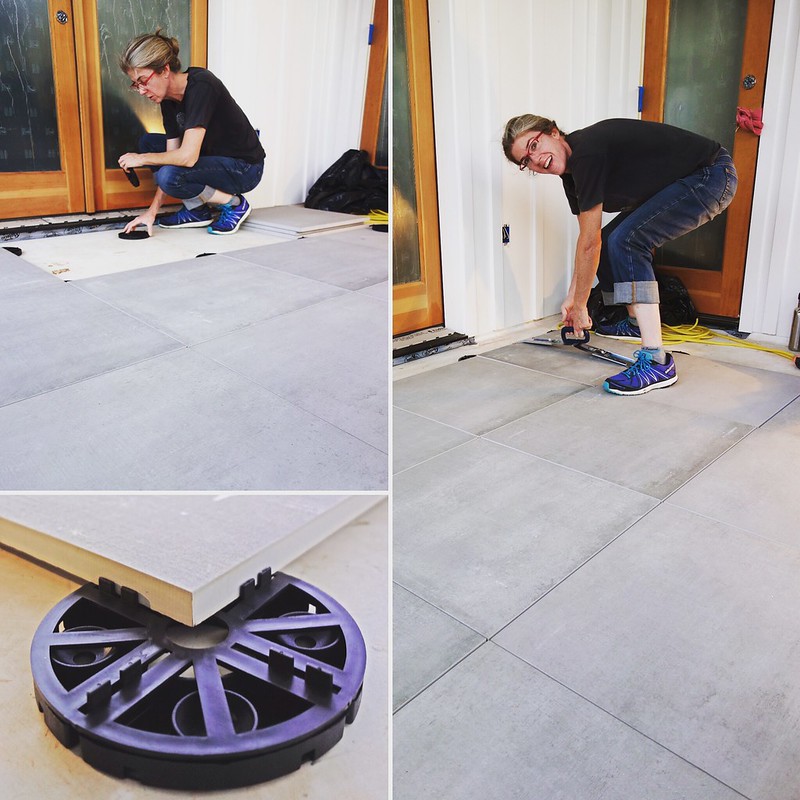
What was the greatest reward?
Being able to host friends and family members is by far the best reward. Molly’s parents come here to escape the Chicago winter for two to six weeks at a time. Other friends visit from up north annually. When we do not have personal guests in town, we operate the apartment as a licensed short-term rental unit. Having a steady stream of rental income is very much a quality of life improvement, as it allows us to save more for retirement and will help us age in place. Today, we live in the front house and rent the smaller back house. At some point in the future, we may live in the back and rent out the larger front house. It is also very rewarding to read the positive reviews. Many of our guests report that staying in the East Austin Nest is their favorite Airbnb experience.
What is your favorite aspect of this project?
My favorite part of the project is being surrounded by the good works of so many of our talented friends and neighbors. Aldo Valdez-Bohm built our kitchen cabinets, bathroom vanity, window bench seat, and three sets of built-in shelves (kitchen, bathroom, and living room); Aldo also helped me assemble a live edge pecan tabletop. Todd Campbell, a fine art metal worker, built a custom queen-sized bed frame, two table bases, curtain rods, and floating shelf brackets; Todd also loaned us some sculptural pieces. Brent Clifton built us some custom sliding barn doors. When I needed to show proof of insurance to salvage longleaf pine out of a 100-year-old house, Tommy Jacoby, a colleague in the solar industry, not only arranged the paperwork but also got sweaty and dirty with me. Shawn Latta, a former solar colleague who is now a project lead for Open Envelope Studio, built a handsome steel fence on the back of the property as well as exterior stair railings. When I needed to install the longest pieces of shiplap months later at an uncomfortable height, another former college, Aaron Cloninger, walked a high plank to help me out. Stan and Martha Pipkin, who own and operate Austin’s Lighthouse Solar, donated Italian glass tiles to our project and helped us find a steel erector; Lighthouse Solar also rebuilt the main electrical service on our property to accommodate the back house. Last but not least, my dad, who passed away before he could see the fruits of our labor, took some ceiling joists that I salvaged and built a beautiful longleaf pine slat table that is a featured part of our guest suite.

What advice would you give others?
Do your homework and start with the fundamentals. Molly and I started by attending Cool House Tours (the next one is coming up on June 13!) and Green By Design workshops hosted by Austin Energy Green Building. We have a legacy library of green building reference books, which is almost as useful and comprehensive as all of the free online resources and tutorials on YouTube. We visit Gail and Pliny Fisk at the Center for Maximum Potential Building Systems at every opportunity. You also want to do your homework when shopping for tradespeople. During construction, we made sure to get at least three quotes for each scope of work that we subcontracted out.
Lastly, and perhaps most importantly, work with an architect. Mistakes in the built environment remain visible for decades. You typically have only one chance to get it right. Molly studied architecture at university and her very first pen and ink sketch from 2014 captured 85% of the back house as it stands today. Getting that final 15% right was a long meditation that required the guidance of a professional with relevant experience and expertise. We worked with a local architect, Craig Nasso, who not only specializes in small spaces but also builds a lot of his own projects on a tight budget using salvaged materials. By working with an architect, we were able to meet our goals and build something that contributes positively to the neighborhood, the built environment, and the natural environment.
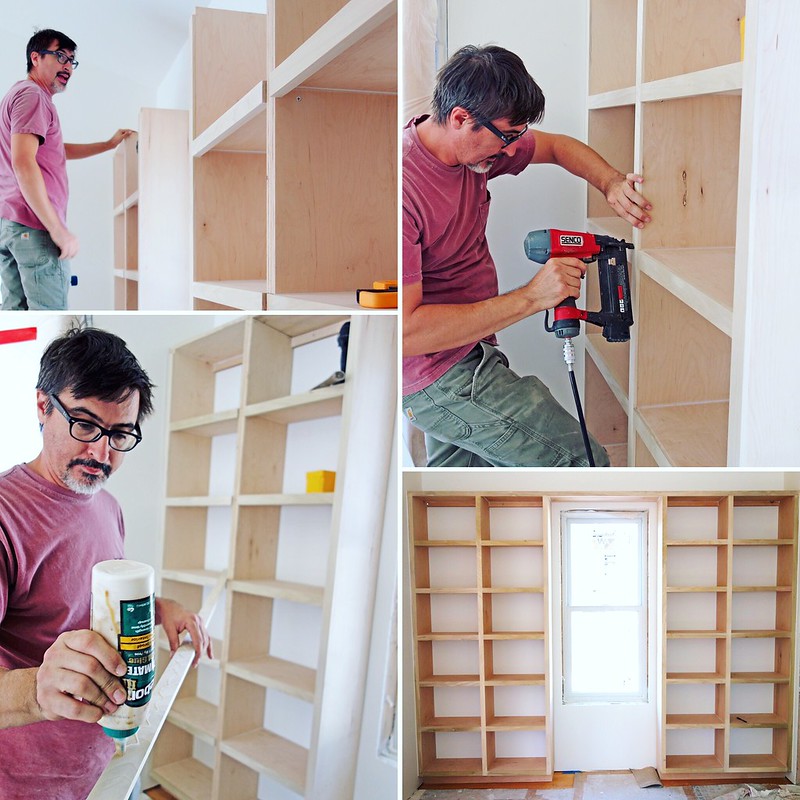
Check out David’s property on the Cool House Tour!
Join the Cool House Tour on Sunday, June 13, 2021, from 10:00 a.m. – 2:30 p.m. to see more images of the property, learn the complete design-build story, and more. Learn more about the event and get your tickets here.
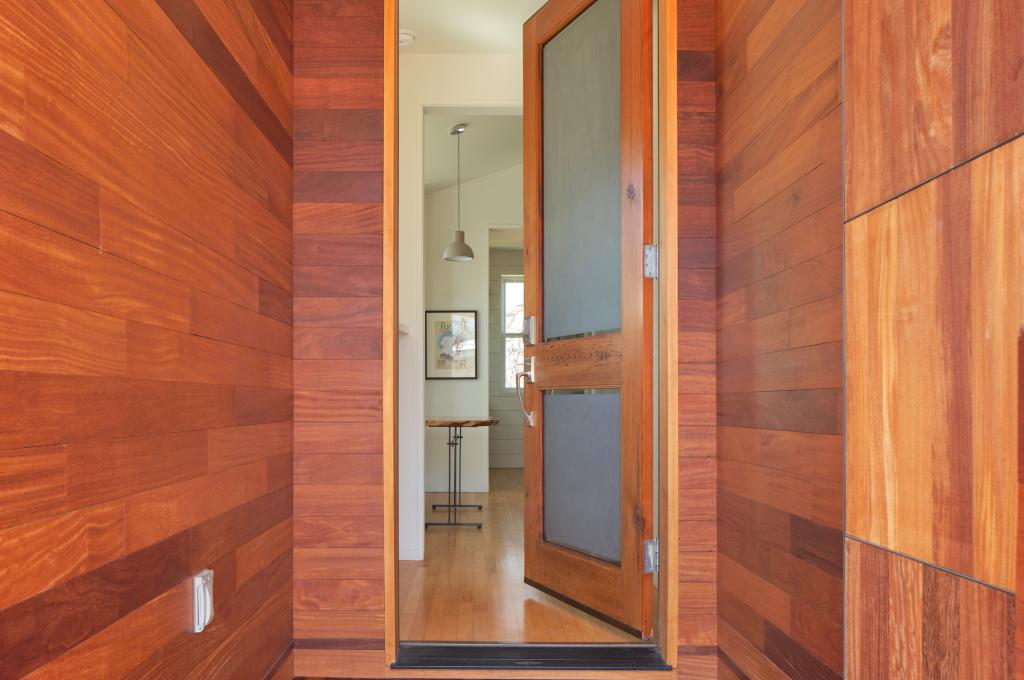
Learn more about climate change in Austin and check out our draft Austin Climate Equity Plan.
Share your net-zero contributions with us on Twitter or Facebook and use #NetZeroHero. If you know a Net-Zero Hero (or heroes!) who should be recognized for their efforts, send your nomination to sustainability@austintexas.gov.



